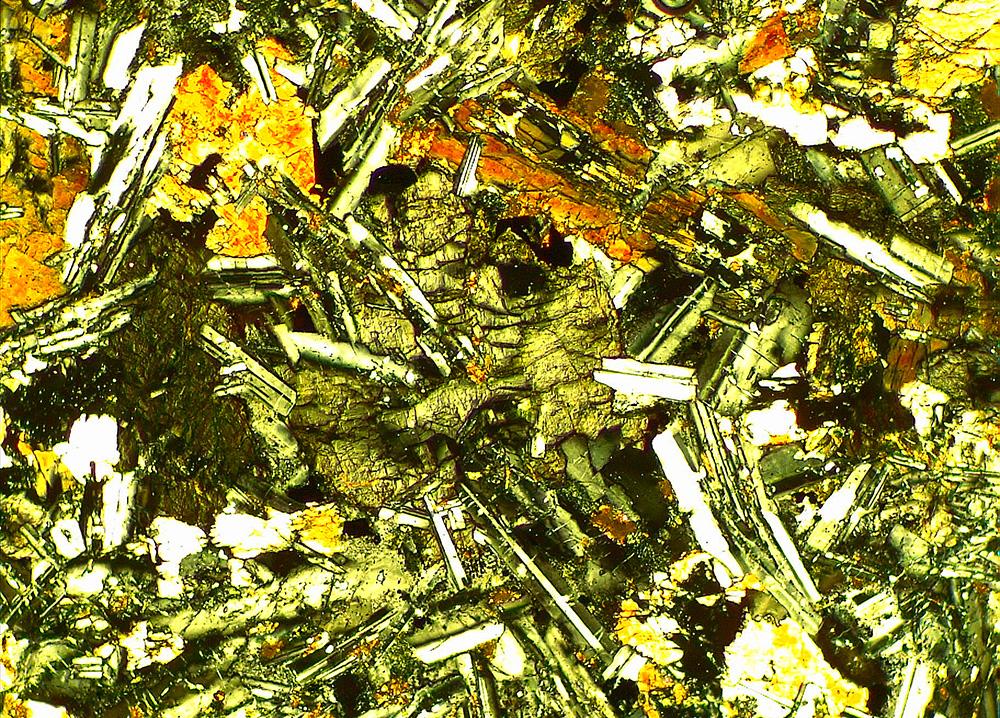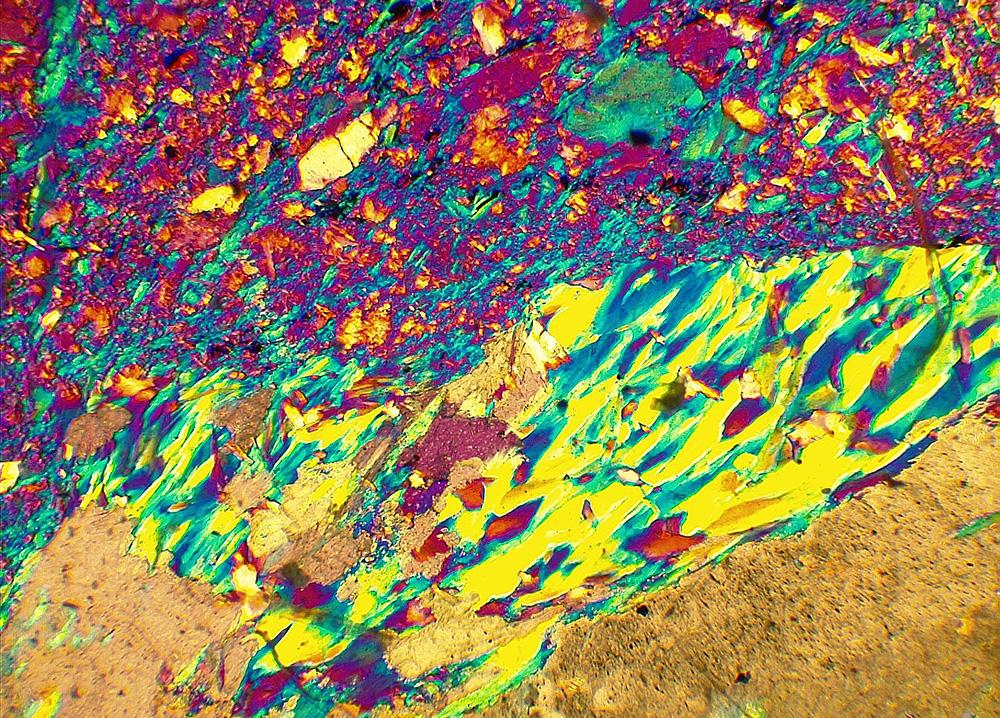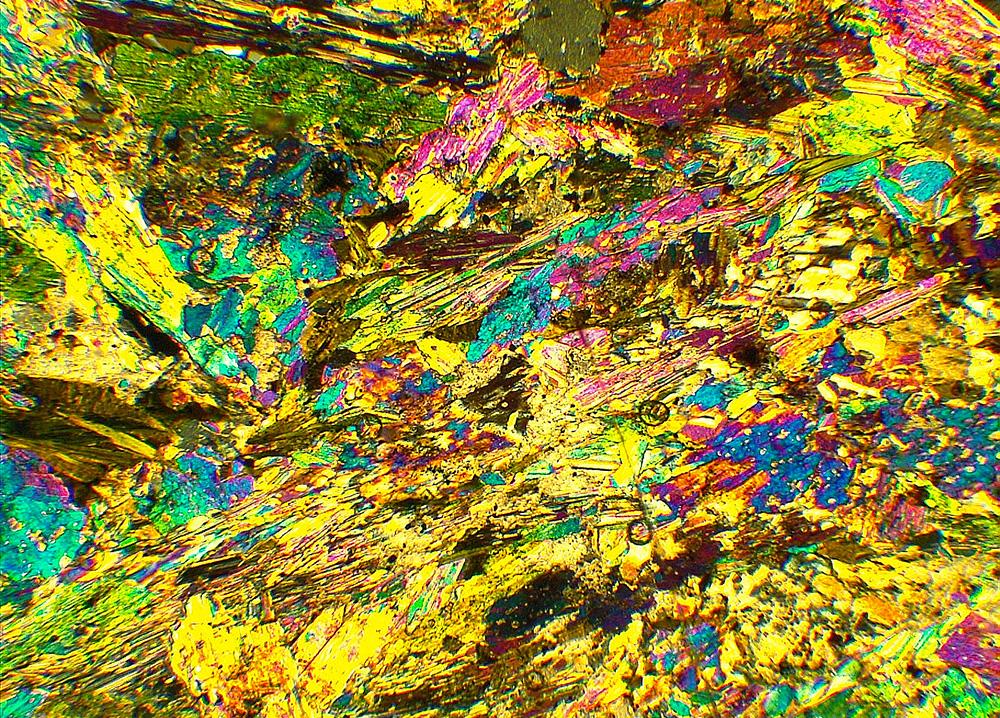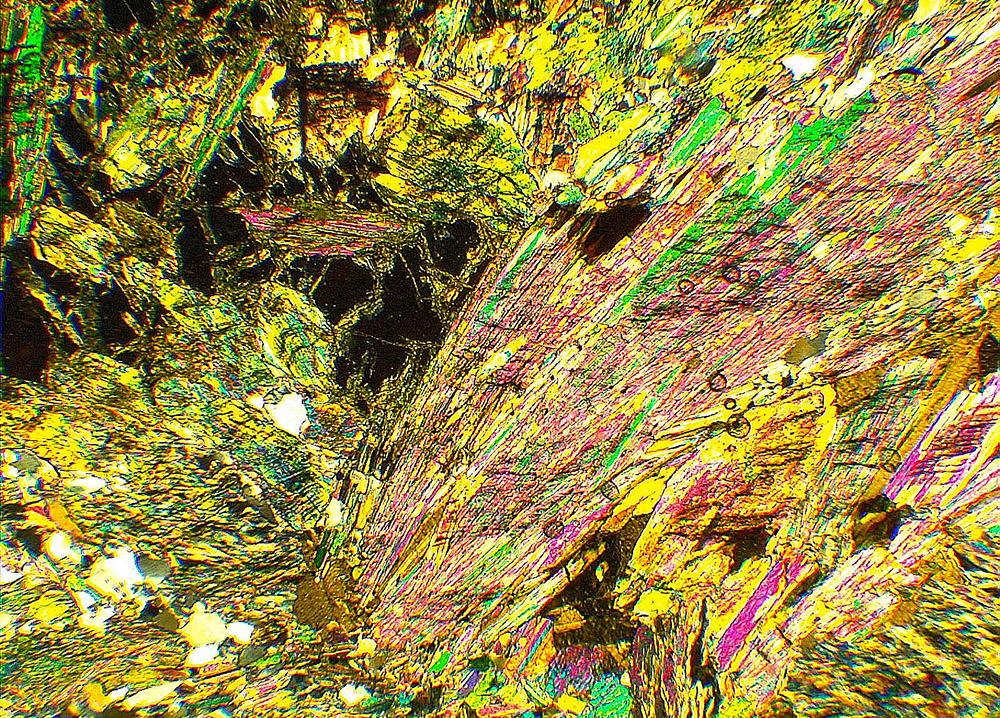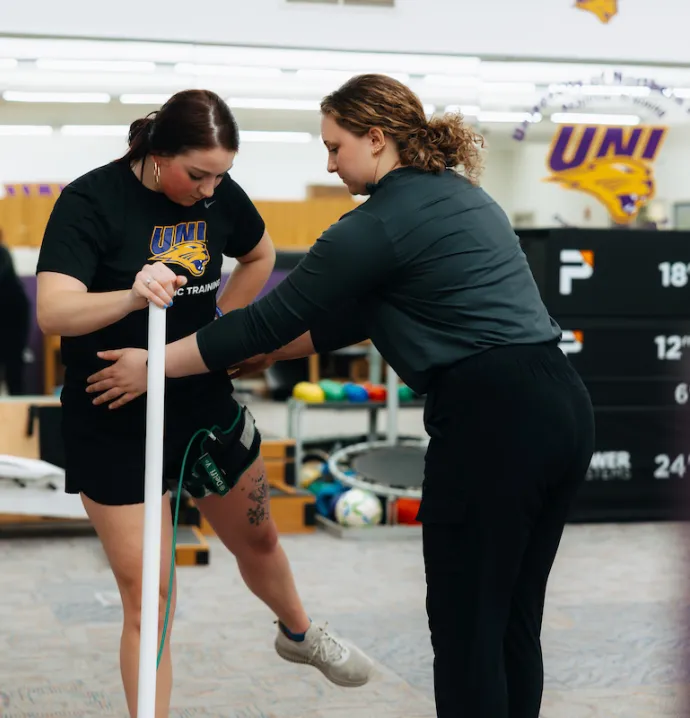New UNI microscopes unveil geological world to students
New UNI microscopes unveil geological world to students
At first glance, it looks like something sprung from the mind of Jackson Pollock.
But the vibrant colors strewn across the image represent not the paint strokes of an artist, but the tiny, mineralogical components of a rock. And they were produced by a new set of scientific instruments at the University of Northern Iowa that will give students a deeper, more detailed look into geology than was previously possible.
Earlier this year, the UNI Department of Earth and Environmental Sciences installed brand-new petrographic microscopes in two of their labs, purchasing 28 new scopes in total using $150,000 in grant funding from the Roy J. Carver Charitable Trust.
Kyle Gray, associate professor of earth and environmental sciences, said the new scopes are a major upgrade for the department and will give students experience learning how to unlock the history of rock specimens.
“The new scopes will make teaching much easier for faculty, and will give students a deeper look, and a more enriching educational experience both in the classroom and while doing research,” Gray said. “We have such an increased capability with these new scopes. We’re very excited to put them to use.”
The microscopes are already being used in student research. Faith Luce, an environmental science and geography major, is using the microscope to determine the composition of pottery fragments uncovered from an archaeological dig in Seebergers Cave near Maquoketa, Iowa.
The department will keep a number of the older, functioning scopes to use in intro labs, giving a greater number of students access to the equipment and further expanding the opportunities for learning within the department.


